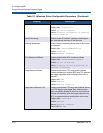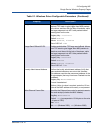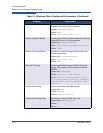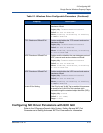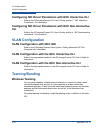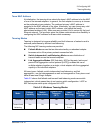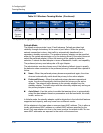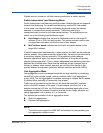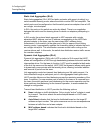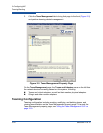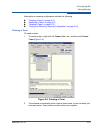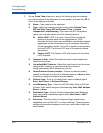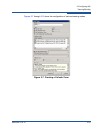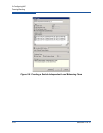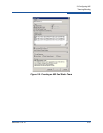
2–Configuring NIC
Teaming/Bonding
2-18 SN0054671-00 B
Static Link Aggregation (SLA)
Static link aggregation (SLA, 802.3ad static protocols with generic trunking) is a
switch-assisted teaming mode, where the switch must be 802.3ad compliant. The
switch ports must be configured so that the switch perceives adapters from a LAG
as a single, virtual adapter.
In SLA, the ports on the switch are active by default. There is no negotiation
between the switch and the teaming driver to decide on adapters participating in
aLAG.
In SLA mode, the protocol stack responds to ARP requests with a single,
advertised MAC address, and an IP address corresponding to the LAG. Each
physical adapter in the team uses the same team MAC address during
transmission. As the switch (at the other end of link) is aware of the trunking
teaming mode, it appropriately modifies the forwarding table to indicate the trunk
as a single virtual port. This modification ensures correct traffic routing on the
receive side as well. In this mode, the switch also distributes receive traffic across
the member adapters.
Dynamic Link Aggregation (DLA)
Dynamic link aggregation (DLA) with LACP is similar to SLA except that LACP
allows self configuration of LAG through handshaking between the switch and the
intermediate driver. For the team to function, LACP must be enabled at both ends
of the link: the server and the switch. LACP (802.3ad dynamic) allows switch ports
to dynamically communicate with the teaming driver, allowing controlled addition
and removal of ports from the team.
Link aggregation mode has transmit load balancing and fail safety support. If a
link connected through a participant port of a link-aggregated team goes down,
LACP provides failover and load balancing across the remaining members of the
team. In addition, if a new member port is added to the team or is removed from
the team, the switch performs load rebalancing for the receive operation and the
driver performs load balancing for the transmit operation, to accommodate the
change in configuration.
Transmit load distribution in LACP provides the following options:
None indicates no traffic distribution. Only a single “active” adapter is used
for transmit. The driver selects the active adapter based on LACP state
information.
Auto Select indicates that the load is distributed based on the target IP
address and port number. This option ensures a one-to-one correspondence
between a traffic flow and a team adapter.
MAC address based indicates that the load is distributed based on the
target MAC address.



